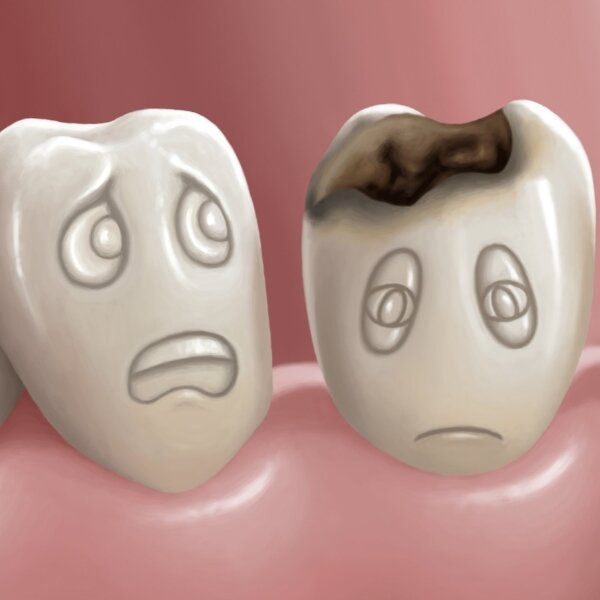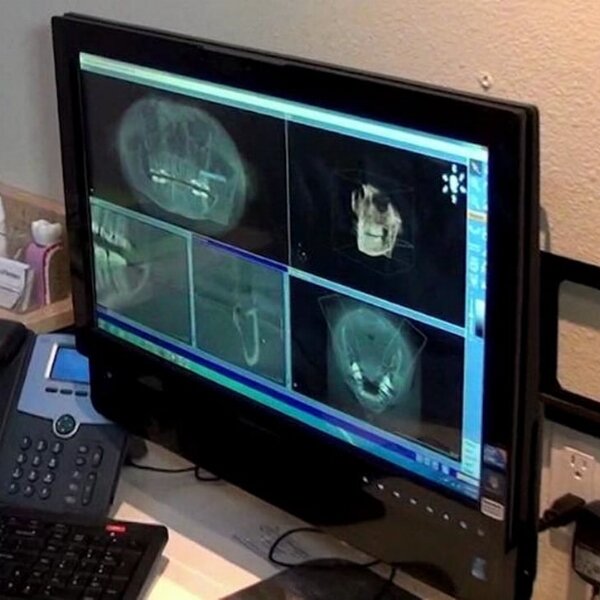Plaque, Sugar, and Bacteria: The trifecta of decay
What is decay?
Dental decay (also known as caries) is the most common disease affecting the teeth, where the tooth begins to be eaten by bacteria and acid, weakening the tooth structure and causing the tooth to become painful, soft, tender and liable to fracture.
What is the cause of dental decay?
Dental decay occurs when the teeth and mouth are not thoroughly cleaned and maintained. When a patient eats a meal and fails to remove the food remnants from the teeth and mouth, the tooth breakdown process starts. Some people are genetically prone to decay, and even though they clean their teeth efficiently, they are still affected by decay in some of their teeth.
How does decay appear?
Most people think that dental decay appears as black or brown spots on the tooth surface, but the truth is that most of these spots are just stains and not actual decay. Decay can only be detected through the dentist, not only because he\she knows the difference between decay and stains, but also because the decay could not be visible on the surface, and would need specialized equipment like X-Rays to be detected. That is why dental check-ups every six months to a year are essential.
Dental caries is composed of three main constituents:
Plaque: This is the film of food remnants deposited on the teeth surface after eating. It contains sugars, carbohydrates, fats, and acids.
Bacteria: Certain strains of bacteria are inherently present inside the mouth, even if the mouth is clean.
Tooth surface: Some surfaces of the tooth are more liable to decay than others, such as the deep pits and fissures present on the occlusal surface (that is the surface that closes together with the opposing tooth). This is because the food remnants and plaque stay in contact with these areas more than with the smooth surfaces.
When the food remains in contact with the tooth surface long enough, an attack by the bacteria that are already in the mouth causes fermentation, releasing acids and other by-products (meaning that if there are no food remnants, the bacteria will have nothing to feed on, and no decay occurs). This acid reacts with the minerals in the tooth structure (mainly calcium and phosphate), dissolving them and leaving the tooth “soft”. Next, comes another strain of bacteria, which invades the soft tooth and starts eating away at the tooth.
How can I prevent decay?
Decay is not a simple process. It is quite complicated and develops and increases over time. There may be no sure way to stop the teeth from being affected by decay, but you can certainly make sure that they develop less frequently. The key to reducing dental decay is to shut down one or more of the constituting factors. First and foremost, keep the tooth surface and mouth clean, because if there are no food remnants, the bacteria will have nothing on which to feed. Most dentists will recommend brushing your teeth twice daily and using dental floss every day. The use of mouthwash is also recommended as it not only washes away the plaque but keeps the bacteria levels to a minimum. Susceptible tooth surfaces can be sealed by a form of gel if the dentist sees them as a primary cause of problems, but that usually occurs with children and very rarely with adults.
If you need a gentle, caring dental team, please call Jennifer Fineberg’s office at (623) 362-2550. We’ll give you the very best dental care we can!


